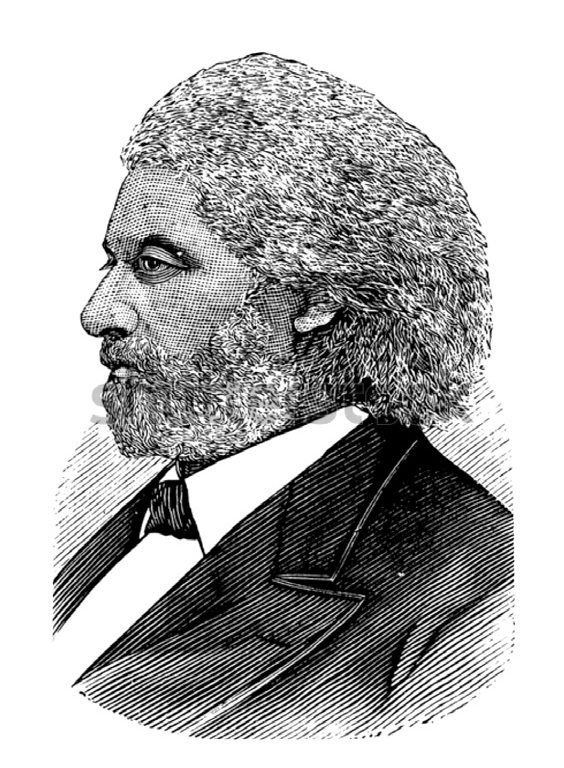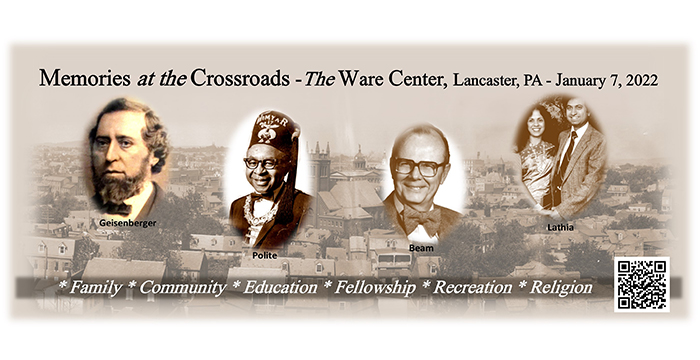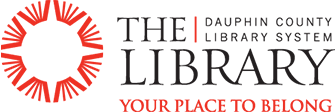When one program about Frederick Douglass brings together an editor, scholar, actor, and playwright, participants see the threads of history weave into a rich tapestry.
They also see The Library in its fullest light, as the place for dialog and enlightenment that encourages self-exploration –the ultimate purpose of The Library’s popular Live and Learn Lyceum & Chautauqua Program.
“You get so enthralled and interested in the work of the presenters, and it encourages you to go out and do our own research and look into them more and explore that curiosity that they pique,” says Adult Programming and Outreach Coordinator Ashley Famularo. “It opens ways of expanding and exploring these ideas for more in-depth discussions and programs.”
 · Live and Learn Lyceum & Chautauqua Program: “Happy Birthday, Frederick Douglass,” 4:00 p.m. to 6:00 p.m. Thursday, February 10. The program convenes Big Think Vice President and Editor in Chief Robert Chapman Smith, Quinnipiac University Professor Christine Kinealy, Actor Eon Gray, playwright Gene Bruskin and motivational speaker and reenactor LeCount R. Holmes, Jr. to discuss Douglass’ work, image-making, and relevance today. Throughout the program, Pennsylvania Past Players actors will read the words of Frederick Douglass. To register and receive a Zoom link, visit Live & Learn dcls.org/liveandlearn.
· Live and Learn Lyceum & Chautauqua Program: “Happy Birthday, Frederick Douglass,” 4:00 p.m. to 6:00 p.m. Thursday, February 10. The program convenes Big Think Vice President and Editor in Chief Robert Chapman Smith, Quinnipiac University Professor Christine Kinealy, Actor Eon Gray, playwright Gene Bruskin and motivational speaker and reenactor LeCount R. Holmes, Jr. to discuss Douglass’ work, image-making, and relevance today. Throughout the program, Pennsylvania Past Players actors will read the words of Frederick Douglass. To register and receive a Zoom link, visit Live & Learn dcls.org/liveandlearn.
What is Live and Learn? It’s a regular series of discussions about timely topics with a historical twist. It’s an initiative of the Commonwealth Monument Project, a part of the International Institute for Peace Through Tourism Harrisburg Peace Promenade, and a fiscal sponsor The Foundation for Enhancing Communities project.
Most importantly, for participants, it’s a chance to tap into presenters’ expertise of local, national, and international renown.
Live and Learn has taken a winding path over its 15-year journey, with a range of public and private sector partners. The unifying thread is the leadership of Lenwood Sloan, the Harrisburg arts activist who originated Live and Learn. At the same time, he was director of cultural and heritage tourism for the Pennsylvania Department of Commerce and Economic Development.
Live and Learn has always been rooted in literacy, from its origins when Pennsylvania Past Players characters would find themselves transported to the present through the “time machine” of a contemporary book. Live and Learn presentations at The Library began around the 150th anniversary of the Civil War, when Pennsylvania Past Players partnered with Dauphin County to open dialogs around the persistence of historical figures who fought for emancipation, suffrage, and civil rights.
In the year before the pandemic, Live and Learn programs alternated between Pennsylvania Past Players lyceums at Gamut Theatre and “table talks” at Library sites.
“Then came COVID, and we were actually lifted up by The Library’s ability to do Zoom and open up to people from all over the country, and to transport – without having to actually transport – authors and playwrights and poets,” Sloan says.
The Harrisburg area is a natural locus for Live and Learn – simultaneously a city, county seat, and state capital, where Black Pennsylvanians took a seat at the tables where policies were made and rights were won.
Past programs have explored how to preserve artifacts, reimagined Harrisburg’s Old Eighth Ward, and introduced the path-blazing work of abolitionist and suffrage activist Frances Ellen Watkins Harper. Programs have also discussed the impact of the 15th Amendment on the free Blacks of Pennsylvania and its relevance to the Black Lives Matter movement.

“We were never told in our history lessons that free Black people in Pennsylvania voted until 1838, and that they lost that vote because of a change in the Pennsylvania constitution,” Sloan says. “For Pennsylvania’s Black community, the 15th amendment was the return of their right to vote. That’s a profound thing, and it speaks to the fragility of the vote.”
The tales and artifacts of the past provide a lens for understanding the present.
“Stories are blueprints for what is happening now,” Sloan says. “They’re not even thumbprints or footprints, they’re blueprints. We’ve been trying to build democracy. This is a test.”
The Library’s partnership has opened new audiences and new possibilities for Live and Learn.
“For me, the library was like a spaceship when we needed a raft,” says Sloan. “It just lifted us up to a whole different place, a different way of presenting. As a change agent and a community builder, the library is a safe house.”
Even in The Library’s transition to virtual presentations, the dynamic Live and Learn format provides engaging moments.
“When he’s closing the program, Lenwood will say, ‘Go out and do your homework,’” says Famularo, “and I say, ‘I am!”




